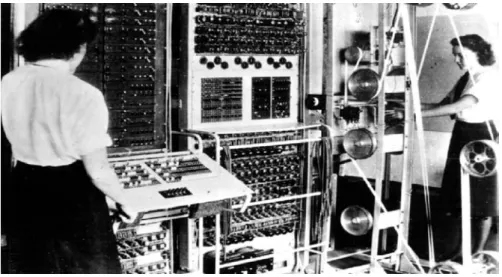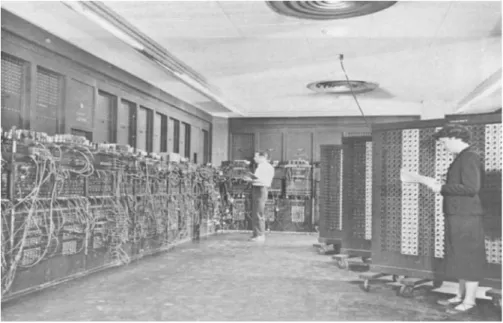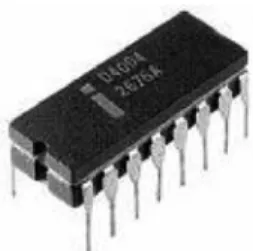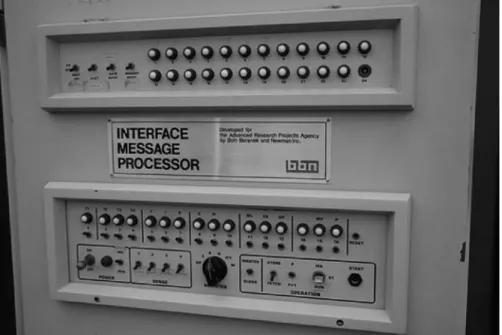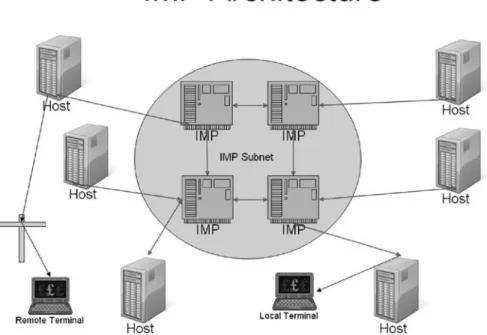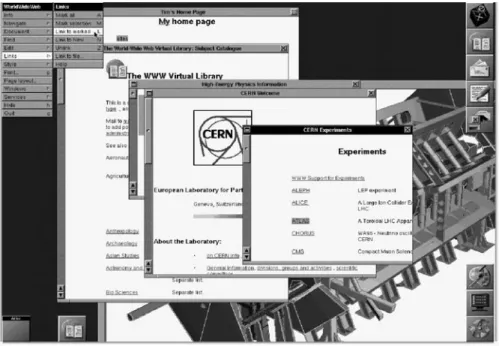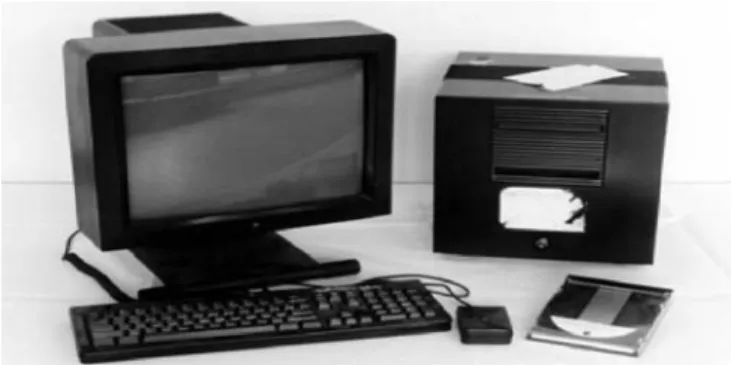Visit the Taylor & Francis website at http://www.taylorandfrancis.com and the CRC Press website at http://www.crcpress.com. The rise of cloud computing xxvi The global nature of the cloud xxvii Cloud-based service offerings xxviii Grid computing or cloud computing.
End-User Access to Cloud Computing 213
Mobile Internet Devices and the Cloud 235
Rittinghouse and Ransome lay the foundation for the reader's understanding of cloud computing, describing its history and evolution and discussing how new technologies such as virtualization played a major role in the growth and adoption of cloud computing. Ultimately, this book will play a role in ushering in the “cloud revolution” and helping to overcome the lack of understanding that currently prevents even faster adoption of cloud computing.
Preface
Even more worrisome are corporations jumping to cloud computing without realizing the consequences of putting critical applications and data in the cloud. In this chapter, we provide an overview of the more common offerings and how their widespread use will affect the world of cloud computing.
Introduction
What Is the Cloud?
The Emergence of Cloud Computing
The Global Nature of the Cloud
Cloud-Based Service Offerings
SaaS is a type of cloud computing that delivers applications through a browser to thousands of clients using a multi-tenant architecture. According to Google, "Google App Engine makes it easy to build an application that performs reliably, even under heavy load and with large amounts of data."7 The Google App Engine environment includes the following features.
Grid Computing or Cloud Computing?
Is the Cloud Model Reliable?
Benefits of Using a Cloud Model
What About Legal Issues When Using Cloud Models?
The American PATRIOT Act and the Stored Communications Act of the Electronic Communications Privacy Act are of great importance. The law expanded the definition of terrorism to include domestic terrorism, expanding the range of activities to which the law enforcement powers of the USA PATRIOT Act could be applied.
What Are the Key Characteristics of Cloud Computing?
The sustainability of the cloud computing model is achieved by leveraging improvements in resource utilization and implementing more energy-efficient systems. Panels, workshops and tutorials are selected to cover a variety of the hottest topics in cloud computing.10.
Challenges for the Cloud
This book will look at those different standards based on the usage and implementation issues related to cloud computing. The management of infrastructure maintained by cloud computing service providers will also be discussed.
The Evolution of Cloud Computing
Chapter Overview
Hardware Evolution
- First-Generation Computers
- Second-Generation Computers
- Third-Generation Computers
- Fourth-Generation Computers
The second data stream was generated internally and designed to be an electronic simulation of. It was possible due to the development of new silicon gate technology that allowed engineers to integrate a much larger number of transistors on a chip that would operate at a much faster speed.
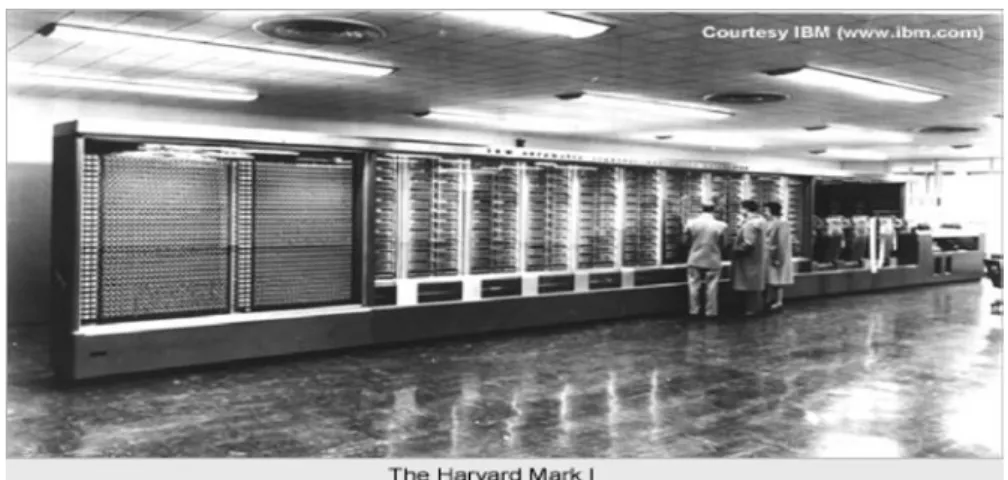
Internet Software Evolution
- Establishing a Common Protocol for the Internet
- Evolution of Ipv6
- Finding a Common Method to Communicate Using the Internet Protocol
- Building a Common Interface to the Internet
- The Appearance of Cloud Formations—From One Computer to a Grid of Many
Frank Heart, Robert Kahn, Severo Ornstein, William Crowther, and David Walden, “The ARPA Computer Network Interface Message Processor,” Proc. In the early 1990s, Ian Foster and Carl Kesselman introduced their concept of “The Grid”. They used an analogy with the electricity grid, where users could connect and use a (metered) utility service.
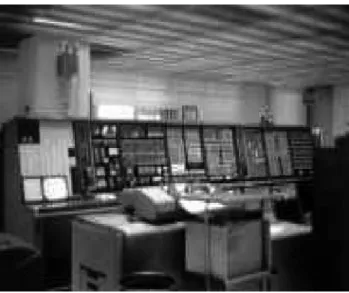
Server Virtualization
- Parallel Processing
- Vector Processing
- Symmetric Multiprocessing Systems
- Massively Parallel Processing Systems
If the process is still running at the end of the time slice, the CPU is aborted and the process goes to the end. In both cases, the CPU scheduler allocates CPU to the next process in the queue.
Chapter Summary
An example of the use of MPP can be found in the field of artificial intelligence. Another example can be found in scientific environments, where certain simulations (such as molecular modeling) and complex mathematical problems can be broken down and each part processed simultaneously.
Web Services Delivered from the Cloud
Chapter Overview
Communication-as-a-Service (CaaS)
- Advantages of CaaS
- Fully Integrated, Enterprise-Class Unified Communications
Moore's Law describes a trend that he recognized has been true since the beginning of the use of integrated circuits (ICs) in computer hardware. CaaS providers host all the equipment needed to deliver their services to their customers, virtually eliminating the need for customers to maintain data center space and equipment.
Infrastructure-as-a-Service (IaaS)
- Modern On-Demand Computing
- Amazon’s Elastic Cloud
- Amazon EC2 Service Characteristics
- Mosso (Rackspace)
Amazon EC2 allows users to place one or more instances in multiple locations. Amazon EC2 locations are composed of regions (such as North America and Europe) and availability zones.
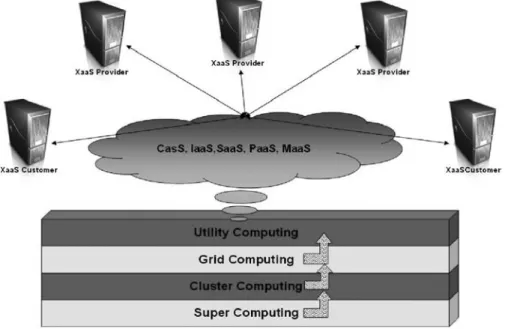
Monitoring-as-a-Service (MaaS)
- Protection Against Internal and External Threats
- Delivering Business Value
- Real-Time Log Monitoring Enables Compliance
The report usually also indicates which specific actions should be taken to minimize the consequences of the vulnerability, if this is known. The service conducts periodic follow-up of tasks performed by security professionals who manage the security of information systems and provides reports that can be used to implement a plan for continuous improvement of the security level of the system.
Platform-as-a-Service (PaaS)
- The Traditional On-Premises Model
- The New Cloud Model
- Key Characteristics of PaaS
This is the case with companies such as Amazon.com, eBay, Google, iTunes and YouTube. PaaS offerings include workflow facilities for application design, application development, testing, deployment, and hosting, as well as application services such as virtual offices, team collaboration, database integration, security, scalability, storage, persistence, state management, dashboard instrumentation, etc. .
Software-as-a-Service (SaaS)
- SaaS Implementation Issues
- Key Characteristics of SaaS
- Benefits of the SaaS Model
SaaS Architectural Maturity Level 2 – Configurability. The second level of SaaS maturity provides greater application flexibility through configuration metadata. As a result, SaaS applications are generally priced based on the number of users who can access the service.
Chapter Summary
In the next chapter, we'll take a look at what's required from a service provider's perspective to make these services available. We will provide an overview of the basic approach to SOA as it applies to data center design.
Building Cloud Networks
Chapter Overview
From the military use of TCP/IP in the 1960s and 1970s to the development and rise of the Internet browser in the late 1980s and early 1990s, we have witnessed growth comparable to what Gordon Moore predicted in 1965. : essentially doubling capacity approximately every two years. We saw the rise of network security in the mid/late 1990s (again in response to a need), and we saw the birth of performance and traffic optimization in the late 1990s/early 2000s, as the growth of the Internet required optimization and higher performance solutions .
The Evolution from the MSP Model to Cloud Computing and Software-as-a-Service
- From Single-Purpose Architectures to Multipurpose Architectures
- Data Center Virtualization
Where the dots terminated between the clouds (i.e., endpoints), access was controlled by I-1.0 devices such as gateways, brokers, and firewalls on customer premises. Software as a Service (SaaS and other [X]aaS offerings such as IaaS, MaaS, and PaaS) can be considered a subset or segment of the cloud computing market that is growing all the time.
The Cloud Data Center
SaaS compared to the traditional hosting environment is that cloud computing is an I-1.0 answer to a company's need to find a reasonable substitute for using expensive outsourced data centers. The cloud evolved from the roots of managed service provider environments and data centers and is a critical element of next-generation data centers compared to the MSPs they evolved from.
Collaboration
- Why Collaboration?
A product portfolio can be built to provide the best of two worlds, the speed and flexibility of the consumer world and the certainty of the enterprise world. In addition to network connections, three solutions are installed to support and enable the collaborative experience.
Service-Oriented Architectures as a Step Toward Cloud Computing
The second area that SOA brings to cloud computing is an end-to-end architectural approach. As part of the enterprise architecture, SOA provides the framework for using cloud computing resources.
Basic Approach to a Data Center-Based SOA
- Planning for Availability
- Planning for SOA Security
Therefore, cloud computing can be used across the entire range of activities – a huge advantage over network computing, which distributes IT only for a specific task. In this context, SOA provides an evolutionary step towards cloud computing by creating the necessary interfaces from the IT infrastructure to the cloud outside the enterprise.
The Role of Open Source Software in Data Centers
But in our environment, we almost always purchase support for our open source products from high-quality vendors. Open source products have forced commercial vendors to compete on price and quality of service.
Where Open Source Software Is Used
- Web Presence
- Database Tier
- Application Tier
- Systems and Network Management Tier
Since it is impossible for the DNS system to guess the TTL value of a domain name, adjustments are often required to "tweak" the system so that it works efficiently. The VMware virtualization platform is built to virtualize the hardware resources found in an x86-based computer (eg, CPU, RAM, hard disk, and network controller) to create a fully functional virtual machine that can run the operating system operating system and its own applications just like a standard computer.
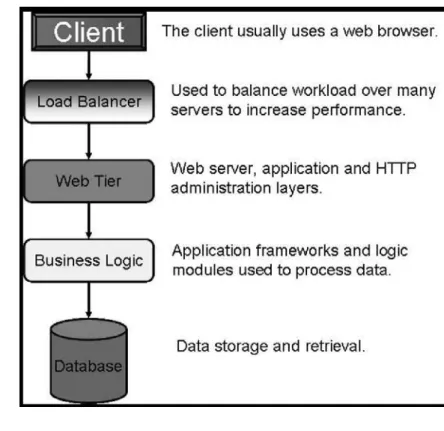
Chapter Summary
To effectively utilize the available physical CPUs, such domains are scheduled by Xen. In the next chapter, we'll walk you through a hands-on how you can build a virtualized computing infrastructure using open source software.
Virtualization Practicum
Chapter Overview
Downloading Sun xVM VirtualBox
Installing Sun xVM VirtualBox
The installer may take a minute or so to complete, depending on your system's processor and memory resources. For Microsoft Windows-based systems, the installer will create a VirtualBox group in the Programs folder of the Start menu, which will allow you to launch the program and access its documentation.
Adding a Guest Operating System to VirtualBox
Downloading FreeDOS as a Guest OS
You will see a list of virtual operating systems with the sponsor website for each one in parentheses. When you click on one of the operating system links, you will be taken to the system download page.
Downloading the 7-Zip Archive Tool
Click the link to download the image and save it somewhere you'll remember - later in this practice you'll unzip this file and unzip the images.
Adding a Guest OS to Sun xVM VirtualBox
What you see appear in the dialog box is the name of the last image added. Check the box in the CD/DVD section if you want to use an optical device.
Chapter Summary
The glue that will make this work in the cloud computing environment is federated identity, presence, and privacy controls—all of which will be discussed in the next chapter. Their role will also be critical in providing a foundation for some of the security solutions required for cloud computing, which will be discussed in Chapter 6.
Federation, Presence, Identity, and Privacy in the Cloud
Chapter Overview
Federation in the Cloud
- Four Levels of Federation
- How Encrypted Federation Differs from Trusted Federation
- Federated Services and Applications
- Protecting and Controlling Federated Communication Some organizations are wary of federation because they fear that real-time
- The Future of Federation
Since the dawn of the Internet era, if you wanted to synchronize services between two servers, the most common solution was to have the client "ping" the host periodically, which is known as polling. Verified federation has been the default service policy on the open XMPP since the release of the open source jabberd 1.2 server.
Presence in the Cloud
- Presence Protocols
- Leveraging Presence
- Presence Enabled
- The Future of Presence
- The Interrelation of Identity, Presence, and Location in the Cloud
- Federated Identity Management
- Cloud and SaaS Identity Management
- Federating Identity
- Claims-Based Solutions
- Identity-as-a-Service (IaaS)
- Compliance-as-a-Service (CaaS) 6
- The Future of Identity in the Cloud
The ability to integrate presence information with existing organizational infrastructure, such as active directory, is critical. For communication devices such as phones and applications such as IM, presence information is often embedded in the device itself.
Privacy and Its Relation to Cloud-Based Information Systems
- Privacy Risks and the Cloud
- Protecting Privacy Information
- The Future of Privacy in the Cloud
Choice and consent: The data owner must give clear and unequivocal consent to the collection, use, storage, disclosure and protection of personal data. Use: Once collected, personal data may only be used (including transfers to third parties) in accordance with the valid business purpose and as specified in the notice.
Chapter Summary
Users of cloud providers would benefit from greater transparency regarding the risks and consequences of cloud computing, fairer and more standard conditions, and better legal protection.
Security in the Cloud
Chapter Overview
Infrastructure-as-a-Service is the provision of computing infrastructure (typically a platform virtualization environment) as a service. The growth of "as-a-service" offerings has been facilitated by extremely low barriers to entry (they are often available for free or available as recurring charges on a personal credit card).
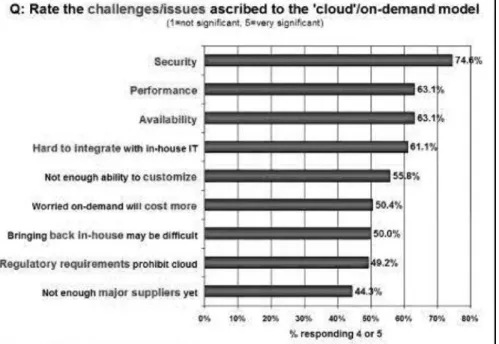
Cloud Security Challenges
Using SaaS offerings in the cloud means that there is much less need for software development. The speed at which applications change in the cloud will affect both SDLC and security.
